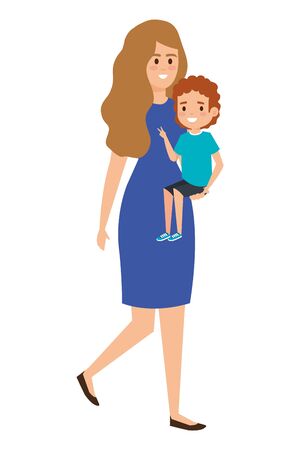1. Introduction: Why Parents Turn to Baby Sign Language
Many parents are turning to baby sign language as a way to communicate with their little ones before they can speak. The ability to express needs and feelings through simple signs helps reduce frustration for both babies and caregivers. But what motivates parents to start teaching baby sign language, and what benefits do they hope to achieve? Let’s explore the reasons behind this growing trend.
Understanding the Motivation Behind Baby Sign Language
Parents choose to teach their babies sign language for various reasons, but most of them share common goals: improving communication, reducing tantrums, and strengthening the parent-child bond. Here are some of the top motivations:
| Reason | Description |
|---|---|
| Early Communication | Babies can use signs to express their needs before they develop verbal skills. |
| Reduced Frustration | When babies can communicate effectively, they experience fewer meltdowns due to misunderstandings. |
| Cognitive Development | Learning signs can enhance a babys cognitive abilities and language skills. |
| Stronger Parent-Child Bond | The process of teaching and using sign language strengthens emotional connections. |
| Smoother Transition to Speech | Babies who learn sign language often develop spoken language skills more easily. |
The Benefits Parents Hope to Achieve
The potential benefits of baby sign language go beyond just communication. Many parents report that their babies feel more confident and independent when they can express themselves. Additionally, studies suggest that signing may contribute to stronger memory retention and early literacy skills. These advantages make baby sign language an appealing option for many families.
A Growing Trend Among Parents
The increasing popularity of baby sign language is evident in parenting groups, online forums, and educational programs. More families are sharing success stories about how signing has positively impacted their daily lives. As we continue exploring real-life experiences, you’ll see firsthand how baby sign language is making a difference for parents and their little ones.
2. First-Time Success: Breaking Communication Barriers
For many parents, the first time their baby successfully uses sign language to communicate is an unforgettable moment. It’s the breakthrough that transforms frustration into understanding and strengthens the bond between parent and child. Here are some real-life stories from parents who experienced these incredible milestones.
Emma’s Story: No More Guessing Games
Emma, a first-time mom, struggled to understand her son Jake’s needs. Crying was his only way of expressing hunger, discomfort, or tiredness. After introducing baby sign language, things changed dramatically.
The Breakthrough Moment
One evening, Jake signed “milk” instead of crying. Emma was overjoyed—no more guessing! From that day on, their communication improved significantly.
Michael’s Story: Reducing Toddler Frustration
Michael and his wife noticed their 14-month-old daughter, Lily, often became frustrated when trying to express herself. They introduced basic signs like “more,” “eat,” and “all done.”
The Breakthrough Moment
Lily was playing with blocks when she suddenly signed “help”. Instead of crying or throwing a tantrum, she calmly let her parents know what she needed.
A Quick Look at Baby Sign Language Success
| Parent | Babys First Sign | Impact |
|---|---|---|
| Emma | “Milk” | No more guessing hunger cues |
| Michael | “Help” | Reduced frustration and tantrums |
| Sophia | “More” | Easier mealtime communication |
Sophia’s Story: Mealtime Made Easier
Sophia introduced sign language to her daughter Ava at 10 months old. Mealtimes used to be stressful because Ava would cry when she wanted more food but couldn’t say it.
The Breakthrough Moment
Ava signed “more”, eliminating mealtime meltdowns. Now, she communicates her needs clearly, making mealtimes pleasant for everyone.
These success stories highlight how baby sign language can make everyday interactions smoother and more enjoyable for both parents and babies. With just a few simple signs, families experience less frustration and more meaningful connections.

3. Strengthening Parent-Child Bonds Through Signing
Many parents have discovered that baby sign language does more than just help their little ones communicate—it also strengthens the emotional bond between them. By using simple signs, parents can better understand their baby’s needs and feelings, reducing frustration for both sides.
Building a Deeper Connection
When babies can express themselves through signs, they feel heard and understood. This creates a sense of trust and security in their relationship with their parents. Instead of crying or getting frustrated, babies can sign what they need, and parents can respond with love and support.
Real-Life Experiences from Parents
Here are some real stories from parents who have used baby sign language to connect more deeply with their children:
| Parent | Babys Age | How Signing Helped |
|---|---|---|
| Amy, California | 10 months | “Before signing, my son would cry when he was hungry, and I had to guess what he needed. Now, he simply signs milk or eat, which makes our days so much smoother!” |
| James, Texas | 12 months | “My daughter started signing more and all done during meals. It has made feeding time stress-free because I know exactly when she’s full.” |
| Sophia, New York | 9 months | “Signing bath before bedtime helped us create a predictable routine. Now, she gets excited when she sees the sign and knows its time to wind down.” |
Reducing Frustration for Parents and Babies
Without words, babies often resort to crying when they need something. This can be stressful for both parents and infants. Baby sign language provides an alternative way for little ones to express themselves clearly, leading to fewer tantrums and a happier household.
By incorporating simple signs into daily routines, many families have found that communication becomes easier, strengthening their connection in a meaningful way. Parents feel empowered knowing they can meet their childs needs quickly, and babies gain confidence in expressing themselves.
4. Unexpected Benefits Beyond Communication
Many parents start using baby sign language to help their little ones communicate before they can speak. However, families often discover that the benefits go far beyond just reducing frustration and improving communication. Parents have shared incredible stories about how baby sign language has positively impacted their childs cognitive development, early language skills, and even social interactions.
Boosting Cognitive Development
Using signs engages a babys brain in unique ways. By associating gestures with words, babies develop stronger memory connections and problem-solving skills. Many parents have noticed their children demonstrating advanced understanding of concepts earlier than expected.
Parent Experiences:
| Parent | Unexpected Benefit |
|---|---|
| Jessica, mother of twins | “My twins started recognizing patterns and making connections between words and actions much earlier than I expected!” |
| Mark, father of a toddler | “I was amazed when my son used the ‘more’ sign to ask for another book instead of food. He understood that signs could apply to different situations!” |
Encouraging Early Language Skills
Many parents report that their babies transition to spoken words more smoothly after learning to sign. Since signing reinforces word meanings, children often develop a larger vocabulary at an earlier age.
How Signing Helps with Language Growth:
- Babies associate signs with spoken words, reinforcing understanding.
- Signing encourages turn-taking in conversations, building communication confidence.
- Early exposure to structured communication helps children pick up speech faster.
Strengthening Parent-Child Bonds
Another unexpected benefit is the emotional connection that develops between parents and babies through signing. Parents feel more in tune with their childs thoughts and needs, leading to stronger relationships.
Real Stories from Parents:
“The first time my daughter signed I love you, my heart melted. It gave us a way to express emotions before she could say the words.” – Emily, mother of a one-year-old
These real-life success stories show that baby sign language is more than just a way to communicate—it’s a powerful tool that enhances cognitive growth, accelerates language skills, and deepens the parent-child bond in ways families never expected.
5. Overcoming Challenges: Tips from Experienced Parents
Teaching baby sign language can be an exciting journey, but it’s not without its challenges. Many parents have faced obstacles along the way, from a baby showing little interest to feeling unsure about consistency. Here, experienced parents share their struggles and how they successfully overcame them.
Common Challenges and How to Overcome Them
Every baby is different, and some may take longer to pick up signs than others. Below are some common difficulties parents encountered and their solutions:
| Challenge | Solution |
|---|---|
| Baby isn’t responding to signs | Be patient and keep signing consistently. Pair signs with spoken words and daily activities. |
| Forgetting to sign regularly | Make signing part of your routine, such as during meals, playtime, or diaper changes. |
| Other caregivers aren’t using signs | Teach family members simple signs and encourage them to use them naturally in interactions. |
| Frustration when progress seems slow | Celebrate small milestones and remember that every baby learns at their own pace. |
Encouragement from Parents Who Have Been There
Amanda, mom of two: “At first, my son seemed uninterested in signing, but I kept at it. One day, he suddenly started signing back! Consistency really does pay off.”
James, dad of a 14-month-old: “I was worried my daughter wasn’t picking up signs quickly enough. But then I realized she was absorbing everything—she just needed time before she was ready to use them herself.”
Key Takeaways for Success
- Stay consistent and patient—it may take weeks or even months before your baby starts signing back.
- Use signs during everyday routines to reinforce learning naturally.
- Get the whole family involved so your baby sees signs being used by multiple people.
- Cherish small victories; even one successful sign is a big step!
Final Words of Encouragement
Every parent faces hurdles when introducing baby sign language, but persistence and patience make all the difference. Keep going, trust the process, and enjoy the special bonding moments that come with it!
6. Encouragement for New Parents: Why It’s Worth Trying
Starting baby sign language may feel like a big step, but many parents who have tried it say it’s one of the best decisions they’ve made. Hearing real stories from families who have experienced its benefits can be incredibly motivating.
Real Stories from Parents
Many parents were skeptical at first, wondering if their baby would actually use signs or if it was worth the effort. But after just a few weeks of consistent practice, they started seeing results. Here are some firsthand experiences:
| Parent | Babys Age When They Started | Biggest Benefit Experienced |
|---|---|---|
| Amy, mom of 2 | 6 months | “Less frustration! My daughter could tell me when she was hungry or tired before she could talk.” |
| Mark, dad of 1 | 8 months | “Bonding time. Teaching my son signs became our special activity, and he loved it.” |
| Sophia, first-time mom | 5 months | “My baby started signing back at 9 months, and we avoided so many tantrums!” |
The Confidence to Communicate
Babies love to express themselves, and sign language gives them a way to do that before they can speak. Parents often notice that their little ones feel proud and excited when they successfully communicate using signs.
A Simple Start Can Lead to Big Results
You don’t need to learn dozens of signs overnight. Many parents start with just a few essential ones like “milk,” “more,” and “all done.” Once babies see that signing helps them get what they need, they naturally want to learn more.
You’re Not Alone!
If you’re feeling unsure about trying baby sign language, know that thousands of parents have been in your shoes—and they’re glad they took the leap! With a little patience and consistency, you’ll start seeing results that make daily life smoother and more enjoyable for both you and your baby.

